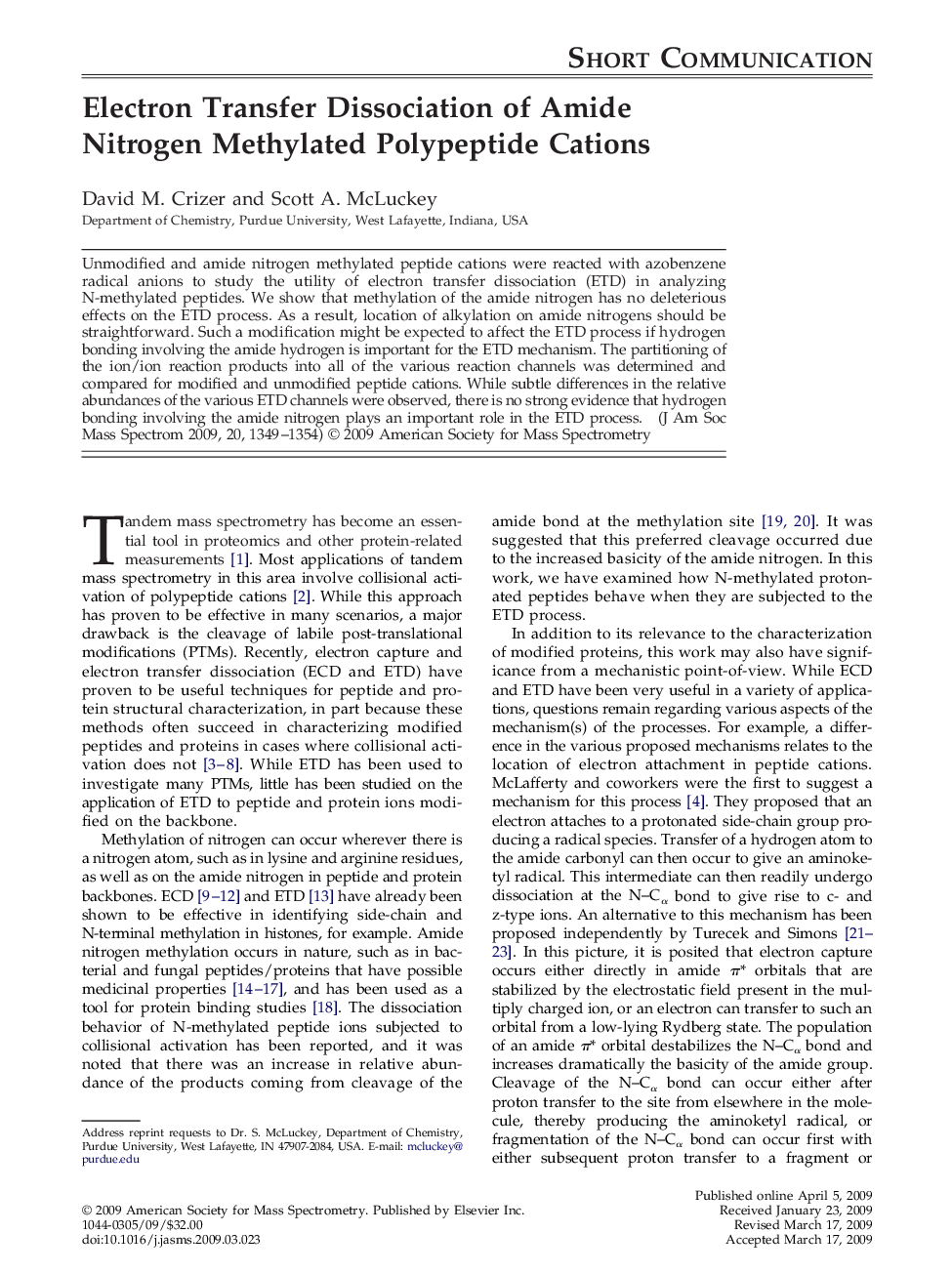| Article ID | Journal | Published Year | Pages | File Type |
|---|---|---|---|---|
| 1195252 | Journal of the American Society for Mass Spectrometry | 2009 | 6 Pages |
Unmodified and amide nitrogen methylated peptide cations were reacted with azobenzene radical anions to study the utility of electron transfer dissociation (ETD) in analyzing N-methylated peptides. We show that methylation of the amide nitrogen has no deleterious effects on the ETD process. As a result, location of alkylation on amide nitrogens should be straightforward. Such a modification might be expected to affect the ETD process if hydrogen bonding involving the amide hydrogen is important for the ETD mechanism. The partitioning of the ion/ion reaction products into all of the various reaction channels was determined and compared for modified and unmodified peptide cations. While subtle differences in the relative abundances of the various ETD channels were observed, there is no strong evidence that hydrogen bonding involving the amide nitrogen plays an important role in the ETD process.
Graphical AbstractETD can readily indicate N-methylated peptides. Modified and unmodified forms undergo very similar dissociation.Figure optionsDownload full-size imageDownload high-quality image (166 K)Download as PowerPoint slide
